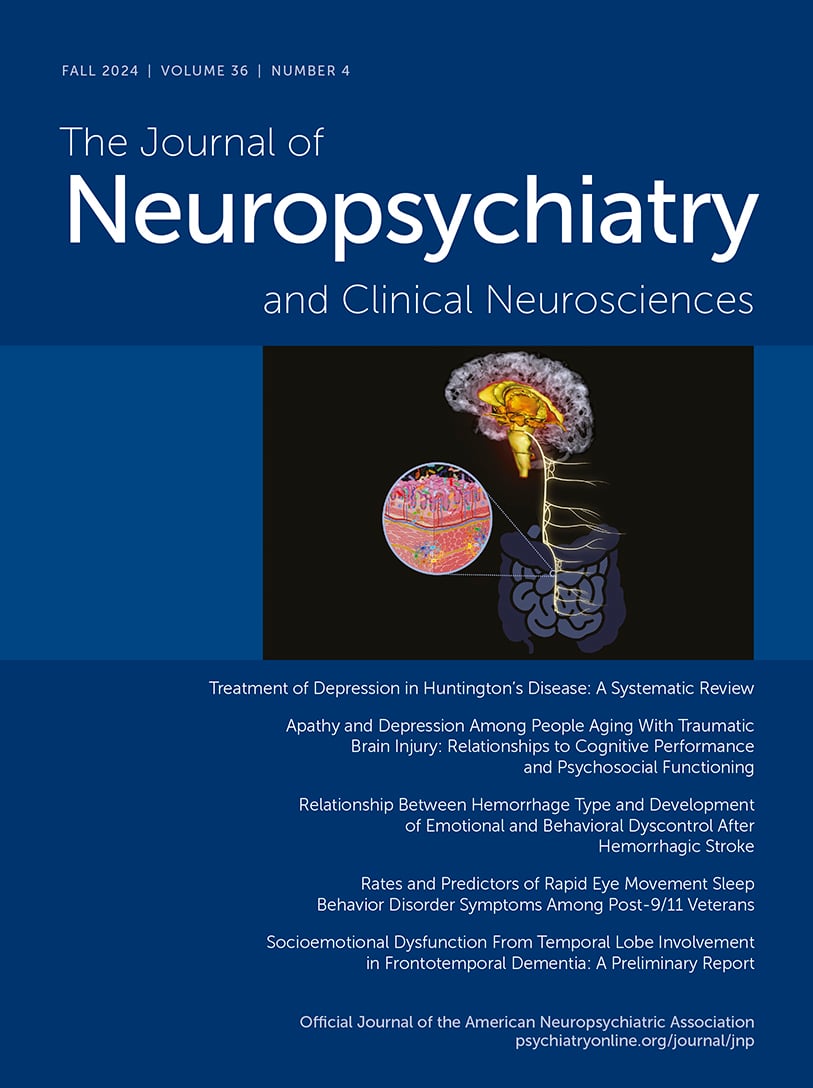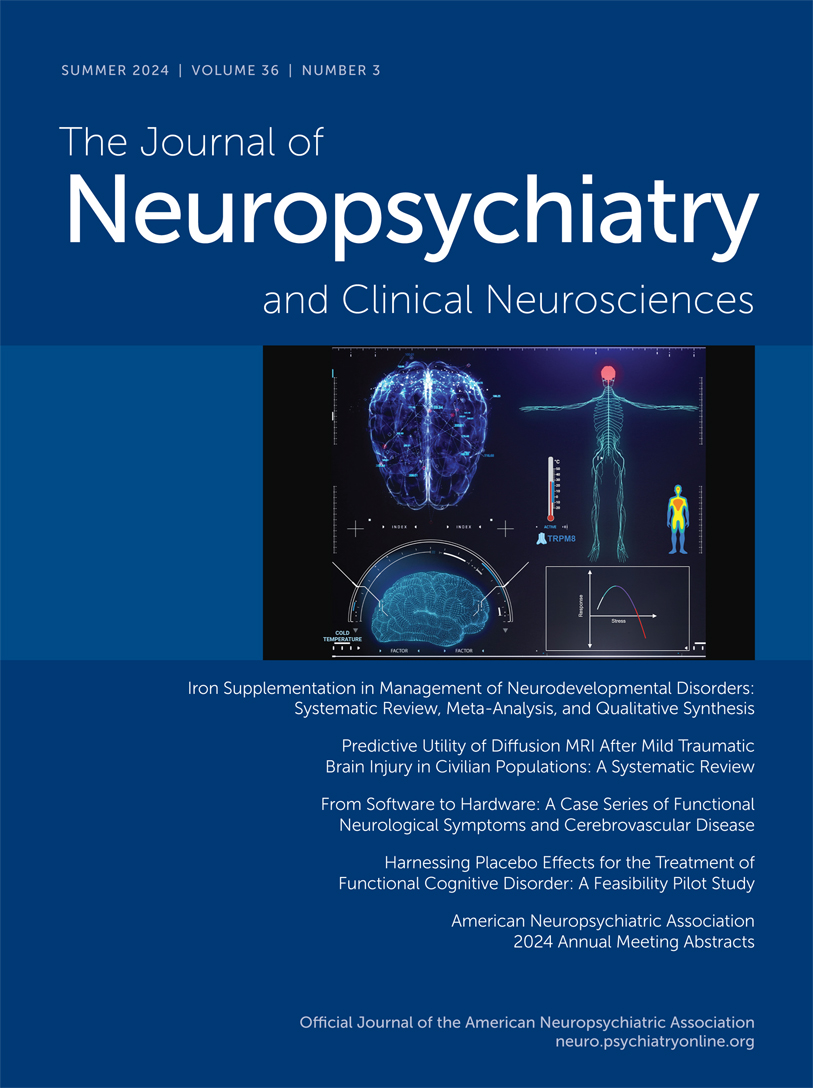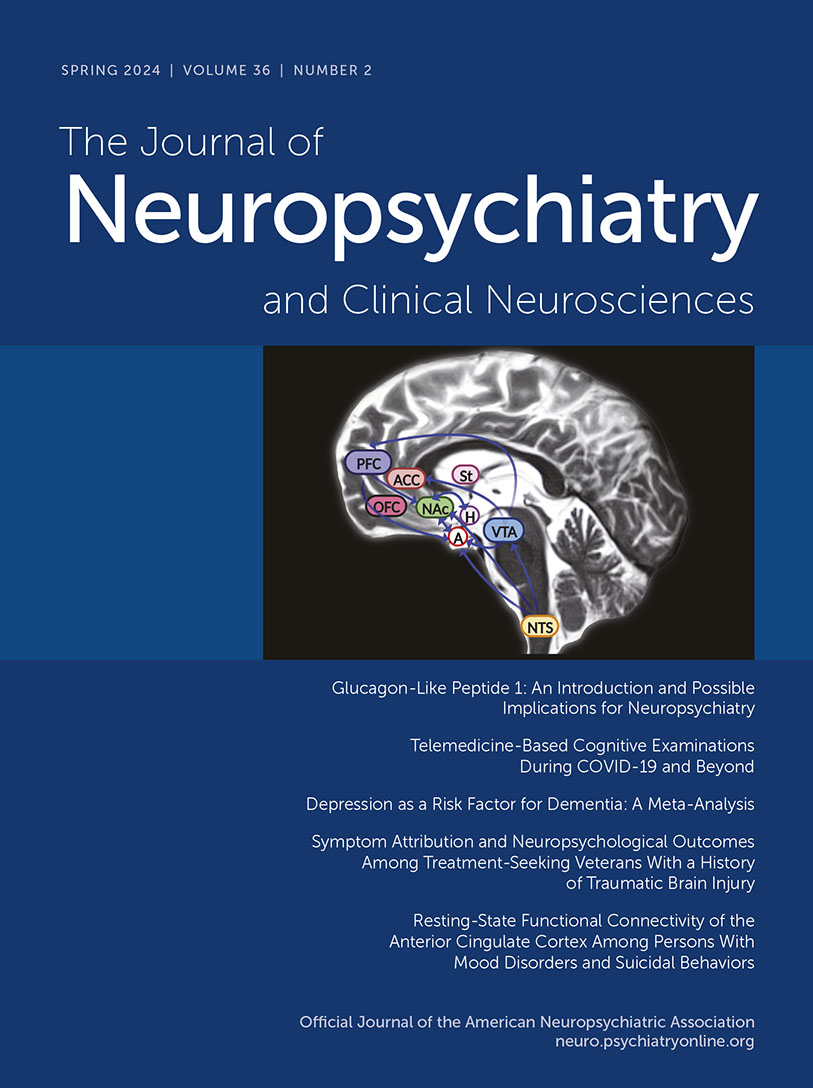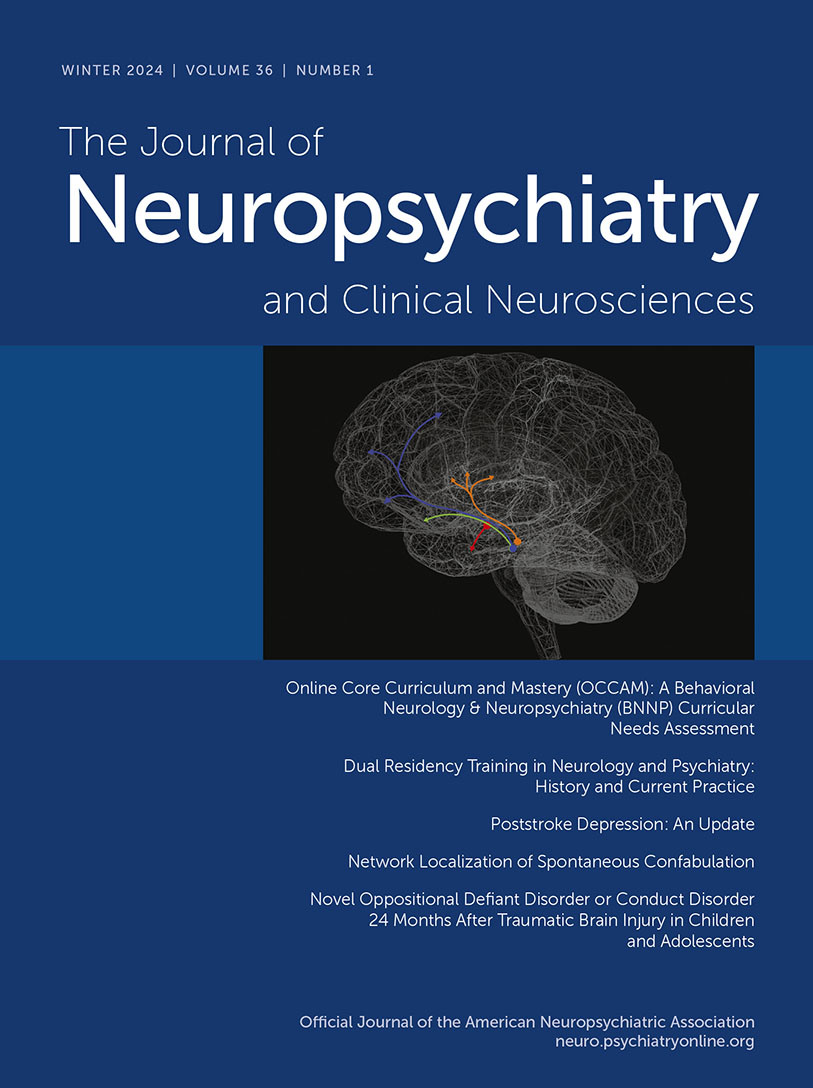The Journal of Neuropsychiatry and Clinical Neurosciences
- Volume 30
- Number 2
- April 2018
Windows to the Brain
Special Articles
Publication date: 14 November 2017
Pages91–100The events leading to traumatic brain injury (TBI) are often psychologically traumatic (e.g., motor vehicle accidents) or occur within a broader context of psychological trauma, such as military combat or recurrent interpersonal violence. In such cases, ...
https://doi.org/10.1176/appi.neuropsych.17090180Publication date: 29 November 2017
Pages101–114The rate and oscillatory hypotheses are the two main current frameworks of basal ganglia pathophysiology. Both hypotheses have emerged from research on movement disorders sharing similar conceptualizations. These pathological conditions are classified ...
https://doi.org/10.1176/appi.neuropsych.17020039Regular Articles
Publication date: 29 November 2017
Pages115–121Huntington’s disease (HD) is an inherited neurodegenerative disease involving motor, cognitive, and psychiatric/behavioral impairments that will eventually affect work role functioning. Few objective data exist regarding predictors of workplace disability ...
https://doi.org/10.1176/appi.neuropsych.17040086Publication date: 20 February 2018
Pages122–129Depressive symptoms and sensory dysfunction, such as reduction in visual and olfactory function, are common in Parkinson’s disease (PD). Previous studies have suggested that depressive symptoms are associated with visual impairments and potentially with ...
https://doi.org/10.1176/appi.neurospych.17030063Publication date: 24 October 2017
Pages130–138White matter hyperintensities (WMHs) include periventricular WMH (pvWMH) and deep WMH. When hyperintensities in the basal ganglia or brainstem are included, the collective term is subcortical hyperintensities. Both WMH and medial temporal lobe atrophy (...
https://doi.org/10.1176/appi.neuropsych.17050099Publication date: 25 January 2018
Pages139–144Poststroke depression is independently associated with poor health outcomes, such as increased mortality, disability, anxiety, and lower quality of life. Identifying the potential biomarkers and detailed mechanisms of poststroke depression may improve the ...
https://doi.org/10.1176/appi.neuropsych.17050108Publication date: 12 January 2018
Pages145–151Catatonia is under-diagnosed in psychiatric settings. No studies have explored the under-diagnosis of catatonia in general hospitals. The authors conducted a retrospective chart review using DSM-5 criteria to diagnose catatonia in medical inpatients ...
https://doi.org/10.1176/appi.neuropsych.17060123Publication date: 14 November 2017
Pages152–159Despite advancements in the assessment and management of functional neurological disorder (FND), the feasibility of implementing a new standard of care remains unclear. Chart reviews were performed for 100 patients with motor FND to investigate factors ...
https://doi.org/10.1176/appi.neuropsych.17060117Clinical and Research Reports
Publication date: 14 November 2017
Pages160–163Psychosis is common in Parkinson’s disease (PD), especially in advanced disease, and can lead to a number of psychotic symptoms, including delusions. One uncommon delusion is Capgras syndrome (CS). The authors report on three PD patients with a history of ...
https://doi.org/10.1176/appi.neuropsych.17030052Case Reports
Past Issues
View Issues Archive
Vol. 36 | No. 4

Vol. 36 | No. 3

Vol. 36 | No. 2
